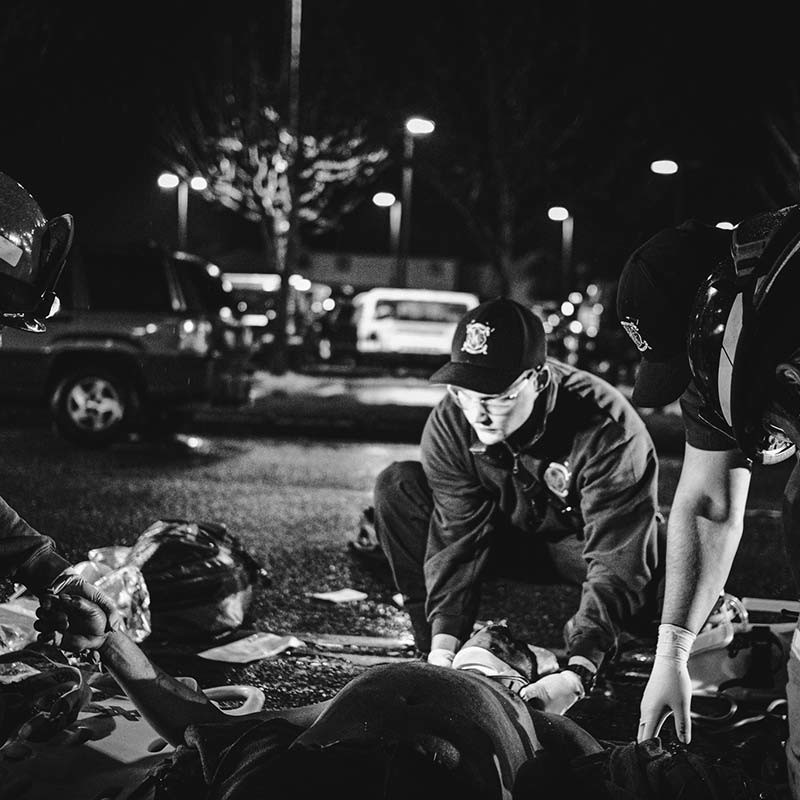Disaster Preparedness
Disasters may strike at any time, usually with little or no warning. You can ensure your family is prepared by planning ahead. The first step is becoming aware of what hazards threaten our region.
Natural Disasters
Drought
Drought can be a result of multiple causes including global weather patterns that produce warm, dry air resulting in less precipitation. Drought may be defined as a prolonged period of dryness severe enough to reduce soil moisture, water and snow levels below the minimum necessary for sustaining plant, animal, and economic systems. If drought threatens follow these steps to prepare and withstand the challenges.
Extreme Heat
As temperatures increase so does the risk for heat related illness. During periods of high heat your body may not be able to cool itself quickly which could cause heat exhaustion. Symptoms of heat exhaustion include; muscle cramps, weakness, dizziness, headache, nausea and vomiting.
Earthquake
King County is located in an area known as the Pacific Ring of Fire, a distinctive zone marked by the prevalence of earthquake and volcanic activity. Direct impacts from earthquakes may include damage to structures like buildings, pipelines, roadways, and bridges. Secondary impacts from earthquakes are common and can include tsunamis, seiches, and landslides. Since King County is “Earthquake Country,” you will want to make a plan for the next tremor.
Flooding
Auburn, Algona and Pacific are located along two of the six major river systems that flow through King County: The Green and White Rivers. In times of flooding these major rivers can be hazardous for residents who live and work in the area. Additionally, urban King County residents should be aware of hazards posed by urban flooding. Learn what you can do to prepare for flooding.
Landslides
Landslides can be caused by storms, earthquakes, and volcanic eruptions, or as a result of fires or human modification of land. They can flow quickly, and occur with little or no notice. Landslides can also travel many miles from their source, growing in size as they pick up more mud and debris. Understanding the possibility of a landslide in your area is an essential component to your family’s emergency plan. More information is available from the U.S. Geological Survey (USGS).
Wildfires
Auburn, Algona and Pacific contain several areas that are considered Wildland/Urban Interface defined as areas where homes are built near or among lands prone to wildland fire. You can take personal responsibility and prepare long before the threat of a wildland fire so your home is ready in case of a fire. Our annual Wildland Urban Interface Home Project of the Week Campaign, addresses home preparation by breaking tasks down into smaller weekly projects. Visit the Ready, Set, Go section of www.ready.gov/wildfires for more information in English and Spanish.
Wind Storms
Each fall and winter season, low pressure systems impact the Pacific Northwest, producing strong winds that can down branches and trees, knock out power and cause damage to buildings. By taking action before the wind event, you can reduce damage.
Winter Storms
Winter storms can bring wind, snow, ice, hail, thunder, lightning, and even tornadoes to the Pacific Northwest. Power outages often accompany these weather events. Prepare your home and family for winter weather.
Preparing for emergencies can increase your ability to survive in the face of disaster.
Technological / Accidental Emergencies
Hazardous materials
Hazardous materials are prevalent throughout our region. While industry is the primary user and maintainer of hazardous items, we also have them in our homes, in our cars, and at our places of work and recreation. Hazardous materials move through our region on highways, rail lines, pipelines, and by ship and barge through Puget Sound. When not properly contained, these materials pose a potential risk to life, health, the environment, and property. Go to here for more information on what to do during a hazardous materials release.
Dam Failure
The chief concern of a major dam failure in King County is the resulting impact to downstream residents. As a result, it is important to be prepared for this risk by registering for public alerts, identifying evacuation routes to higher ground from your home or business, and assembling a “grab and go” emergency supply kit in case you are directed to evacuate quickly. Learn more about this hazard here. Additional resources are found at DamSafety.org.
Intentional / Man-Made Emergencies
Terrorism Event / Active Shooter
It is important to recognize signs of potential violence around you so you are prepared to react in the case of an active shooter or other attack. Remember during an active shooting to RUN. HIDE. FIGHT. Learn more here.
How to prepare for emergencies
Preparing for emergencies can increase your ability to survive in the face of disaster. There are three main steps:
What to do in an emergency / disaster
Evacuation
A wide variety of emergencies may cause an evacuation. Planning ahead is vital to ensuring that you can get out quickly and safely, no matter what the circumstances. See evacuation tips at here.
Shelter
Choosing to take shelter is necessary in many emergencies. “Sheltering in place” is appropriate when conditions require that you seek protection in your home, place of employment or other location when disaster strikes. Sheltering outside the hazard area could include staying with others, seeking commercial lodging or staying in a mass care facility. Learn more about sheltering here.
Local and national alerts
Public safety officials use timely and reliable systems to alert you and your family in the event of natural or man-made disasters. See the links below for ways to receive local and national alerts.




